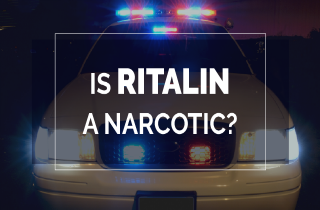Yes. And no.
Ritalin is the common name for methylphenidate, classified by the Drug Enforcement Administration as a Schedule II narcotic – the same classification as cocaine, morphine and amphetamines. It is typically abused by teens, college students, and young adults for its stimulant effects.
However, Ritalin IS NOT A NARCOTIC medically. More here on the legal and medical classifications for Ritalin, with a section at the end for your questions. In fact, we try to respond to all legitimate questions with a personal and prompt reply.
Main medical uses for Ritalin
Prescription stimulants have a paradoxically calming and “focusing” effect on individuals with ADHD. Ritalin is prescribed to patients for daily use, and come in the form of tablets or capsules of varying dosages. Treatment of ADHD with Ritalin, often in conjunction with psychotherapy, helps to improve ADHD symptoms along with self-esteem, cognition ability, and social and family interactions.
What is a narcotic? (medical)
The word “narcotic” can be used in different contexts and mean different things. The term “narcotic” used in a medical context originally referred to any psychoactive compound with sleep-inducing properties. Now, the class of drugs called narcotics refer to the class of drugs derived from opium or an opium-like compound that relieve pain, often induce sleep, can alter consciousness, and are potentially addictive.
Also called “opiates” or “opioids”, medical narcotics work by binding to receptors in the brain, which blocks the feeling of pain. When used carefully and under a doctor’s direct care, they can be effective at reducing pain. And under this classification, Ritalin IS NOT A NARCOTIC.
What is a narcotic? (legal)
When used in a legal context, a narcotic drug is simply one that is prohibited, or one that is used in violation of strict governmental regulation. In this context, Ritalin IS CONSIDERED A NARCOTIC, as it is scheduled as a Schedule II narcotic under the U.S. Controlled Substances Act. So, when you use Ritalin other than prescribed, without a prescription, if you allow another person to use your Ritalin, or are selling it…you are breaking the law.
Ritalin narcotic abuse and Ritalin as a narcotic
Prescription stimulants are sometimes abuse. When you abuse Ritalin, you break the law. What defines using Ritalin as a narcotic? Basically, you can be criminally charged when Ritalin is:
- taken in higher quantities than prescribed
- taken in a different manner than prescribed (snorted or mainlined)
- taken without a prescription
Because Ritalin suppresses appetite, increases wakefulness, and increases focus and attention, it is frequently abused for purposes of weight loss or performance enhancement to help study or boost grades in school. Because it may produce euphoria, Ritalin is abused frequently for recreational purposes to get high. Euphoria from Ritalin is generally produced when pills are crushed and then snorted or mixed with water and injected.
Why is Ritalin a Schedule II drug?
Methylphenidate, a Schedule II substance, has a high potential for abuse and produces many of the same effects as cocaine or the amphetamines. The abuse of this substance has been documented among those who dissolve the tablets in water and inject the mixture.
Complications arising from this practice are common due to the insoluble fillers used in the tablets. When injected, these materials block small blood vessels, causing serious damage to the lungs and retina of the eye. Binge use, psychotic episodes, cardiovascular complications, and severe psychological addiction have all been associated with methylphenidate abuse.
Is Ritalin addictive?
Yes, Ritalin is addictive.
In fact, addiction to Ritalin is a very real consideration for anyone taking it without medical supervision. Addiction most likely occurs because Ritalin, when taken in doses and routes other than those prescribed by a doctor, can induce a rapid rise in dopamine in the brain. Furthermore, if the medication is abused chronically, Ritalin withdrawal symptoms including fatigue, depression, and disturbed sleep patterns can occur when a person stops taking it.
Should Ritalin classification change?
We’re not quite sure.
The Food and Drug Administration (FDA) issues an additional “Black Box” warning label for Ritalin, which means that medical studies indicate methylpenidate carries a significant risk of serious, or even life-threatening, adverse effects. Ritalin is classified as a schedule II substance by the FDA because it shares the same abuse potential as cocaine and morphine that may lead to severe psychological or physical dependence.
There is little research on the long term effects of using methylphenidate. It is possible to build up a tolerance to Ritalin over time, meaning that you’ll need to take larger doses to achieve the same effect. Over the course of weeks or months, however, the body may become dependent on the drug to function normally. This is why we hesitate to strongly advocate for changing Ritalin’s legal narcotic classification.
Ritalin narcotic questions
Do you still have questions about using Ritalin? Please share your opinion or send us any question you have about Ritalin and its use. We will try to respond you personally and promptly.









Related Posts